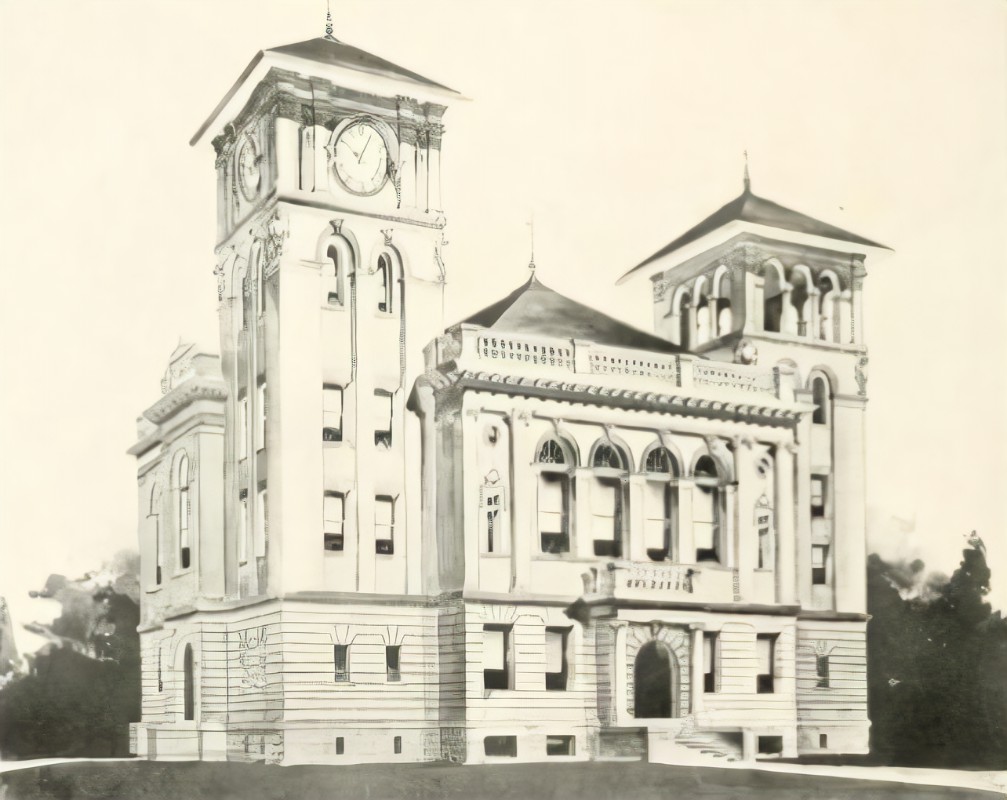The Commonwealth of Virginia’s Prosecution Case So Far
As we wrap up the Commonwealth of Virginia’s Prosecution case against Doctor Marshall Benton Taylor, the Defense gets set to put on their case. In our last video, we covered and summarized the testimonies of William (Bud) Gilliam, his son Milburn Gilliam, and Joe Perkins.
These three men all testified to a conversation the three had had with Taylor “about a week before the killings.” The men testified that they had talked about shooting into the bed of Ira Mullins. This event had happened on April 14th and Taylor had told them he knew all about it even though he had been in Kentucky at the time.
When asked about how he knew, Taylor had replied that “The Spirits” had told him. But Dr. Taylor had also told them that Ira Mullins had offered $200 to Dock Mullins to kill him. These testimonies seem to corroborate the testimony of John Branham. Who testified that on Thursday after the killings, Taylor had been on the way to the Wise Courthouse to meet Dock Mullins. And that Taylor had told him that Dock was going to swear out an affidavit that Ira had tried to hire him to assassinate Taylor.
The Commonwealth of Virginia’s Prosecution Witnesses in Summary

We also summarized the testimonies of May Branham, Logan Nottingham, and George E Roberson. May and Logan had given testimony that on the Sunday night before the massacre, they had seen Dr. Taylor and another man, who May identified as Cal Fleming, riding towards the Pound Gap and Kentucky.
May Branham further testifies that she had seen Taylor on Thursday after the massacre going towards Pound, which also corroborates John Branham’s testimony. She goes on to say that Dr. Taylor and Cal Fleming had come to her house sometime after that. But neither of them had talked about the killings.
George E Roberson would testify that he had seen Dr. Taylor at his house two weeks before the massacre. He would say that Taylor had been staying with Aunt Ellen Alley during the time in question which corroborates her later testimony of the same thing. Roberson would go on to say that Taylor had come to his house several times after the killings. George would end his testimony by stating that he had never heard Taylor make any declarations about the killing of Mullins.
Also, in our last video, we summarized the testimony of John Venters. But we went into a little more detail on his testimony because of the change in recording style in the transcript that we believe indicates that it may have been edited.
Venters would testify that on about May the 24th he had sought out Dr. Taylor to treat a sick child. And that he had done so even though he had heard about the massacre, and by that time, he had probably heard the rumors about Taylor as well. John then testifies that Dr. Taylor had returned to his house to see the sick child several days later.
It is here that the transcript records the most unique testimony about Dr. Taylor’s rifle. Every other time the rifle is said to be a 45×75 using only numbers. But here the phrase is spelled out as a forty-five-seventy-five using no numbers. He would also be asked about the guns that the Fleming brothers had been carrying. The answer he gives about them is recorded in the same fashion.
The Abnormality of Venter’s Testimony for the Prosecution
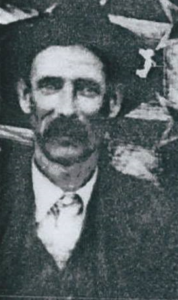
We freely admit that in the transcript’s prosecution examination phase of the testimony of John Venters. We could find no evidence of editing. But there are several anomalies that stand out during the Cross-Examination by the defense. Bear in mind that Dr. Taylor’s rifle had NOT yet been entered into evidence.
Venters is asked by the defense about a type of rifle and who owns one. He replies that Henry Adams, James Potter, and Howard Lytle owned 44×75 rifles… At the time of the trial, this Rifle did not exist. But the 1873, 44×40, rifle did exist in both rim-fire and center-fire models.
We know from the often-told story and the affidavit of I.N. Mills that the ammunition found at the crime scene was indeed a rimfire version of the 44-caliber rifle. This ammunition would indeed fit in Dr. Taylor’s rifle but would have to be hand loaded and would have struck the shell “Just off Center” again as we are told by the often-told story and the affidavit of Mr. Mills.
Therefore, in this instance, we think that it is the cross-examination of John Venters that has been altered. We think that 44×40 was changed to 44×75. We also found it highly suspicious that Mr. Venters was asked where everyone he named as owning a similar rifle lived. Except for James Potter. A man whose name appears over and over in this trial and in the often-told story.
The Testimonies of Filmore Addington and John B Mullins.
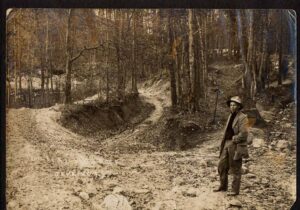
Filmore Addington would testify that on the Friday after the massacre he would see Dr. Taylor talking with his neighbor Whit Marshall. He states that the Fleming brothers had been with him and that they had come through the woods and spoken with Marshall by his fence. The next is a little confusing as Addington states that when he saw Taylor talking to Marshall the next week, Taylor had said not to talk so loud. Addington finishes up his testimony by stating that before the killing he had never heard Taylor make any declaration against Ira Mullins.
John B Mullins would testify about a conversation he had with Taylor in March of that year. They had been talking about a recent shooting that had happened on Bold Camp Creek in Pound Va.
He goes on to say that Taylor said “…it was nothing that would be…”
He said that Taylor had said, “…that they had moved over to the Pound, and he looked to be killed every day.”
Mullins would go on to testify that Taylor had not said anything about Ira Mullins, but he (Mullins) thought that Ira had just moved to the Pound. Mullins would testify that the shooting they had talked about at the time was “just in fun” and that Ed Hall (a deputy sheriff) had just moved to Pound.
The Testimony of W. B. Renfro
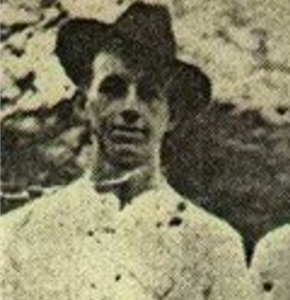
The testimony of W. B. Renfro is unique for three reasons. He was a deputy sheriff, after Taylor’s arrest he and another deputy had brought Dr. Taylor back to Gladeville to stand trial. And he is the first witness to testify to the whereabouts of Dr. Taylor’s rifle.
Although RM & DO Baldwin would identify Dr. Taylor in Bluefield West Virginia, they could not make an arrest. This was because although an indictment had been issued there was no warrant for his arrest. The Baldwins then notified the Sheriff of Giles County Virginia of Taylor’s presence.
The sheriff of Giles County responded by sending Deputy Moushon to Bluefield. Moushon arrived just as Taylor was boarding a southbound train heading back into Virginia. Moushon and the Baldwins boarded the same train and kept Taylor under surveillance until they arrived in Pearisburg Virginia.
Deputy Moushon then arrested Taylor and held him until an arrest warrant could be obtained from a judge in Giles County. Taylor was then remanded into the custody of the Baldwins who boarded another train heading to Norton Virginia.
Taylor and one of the Baldwins would exit that train in Tazwell Va. While the other Baldwin continued to Wise County to collect a private bounty that had been offered for Taylor’s arrest… We have no idea who had issued the bounty, how much it was, or if it was ever paid to the Baldwin detective agency.
Deputy Renfro testified that he had not seen Dr. Taylor after the killing. But that he and deputy White had been sent to Tazwell to bring Taylor back to Wise County. This testimony dispels the rumor about an arrest in Norton or that the Baldwins had returned him to Norton.
Renfro testifies that Dr. Taylor had told them that if he had not been caught, he would have been in Florida that day. Renfro is then asked something about a gun. When Taylor was arrested, he had had his twin Colt .45 pistols. But Renfro responds by telling the court that he thought that the jail guard George Hylton was using a 45×75 and that he thought that the rifle had belonged to Dr. Taylor…
At this point, we must point out that the rifle was not a part of the evidence in this case. And that it would not be entered into evidence until the last witness for the defense testifies that he had shot the gun during the trial.
The Testimony of William Mullins
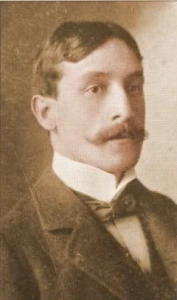
William Mullins would be the final witness that prosecutor Bruce would call to the stand while trying to build his case. His testimony is hard to follow and once again highlights the disadvantages that we and the appellate court would have had, by not knowing exactly what the witness was asked. But we shall try to make sense of the testimony.
Mullins stated that Dr. Taylor had said, “If I ever get in a row with another wagon, I’ll shoot the horses first, and I’ll get what is in the wagon.” Mullins then says that Taylor had not stated who he had been talking about. But he thought that it had to do with the shootout that Dr. Taylor and Ira Mullins had had in Gladeville. Another note here is that it is probably this testimony where the folk tale about this shootout being the one that had left Ira a quadriplegic comes from.
William goes on to testify that Jarvey Candill had given him a message to give to Dr. Taylor. The message was that Ira and Henderson Mullins along with someone named Palter had gone to NC for a load of whiskey. To unscramble this testimony, we think that the conversation and statement about shooting the horses were a result of the message from Candill.
William Mullins would further testify that Candill had also said that he (Candill) would let Taylor know when the Mullins party would return from North Carolina with the whisky.
William would go on to state that Taylor had not told him if he would try to catch Ira and Henderson. But would say that he saw Taylor later, and at that time Taylor had told him he had seen Jarvey Candill.
William goes on to say that Taylor had said that he and Jeff Mullins had watched the Mullins house in Kentucky day and night waiting for Ira and Henderson to return.
On cross-examination, William Mullins would testify that Dr. Taylor was a United States marshal at the time when he carried the message from Jarvey Candill. He would also testify that he was with Dr. Taylor when the news came from North Carolina that Ira Mullins had been killed. William testified that when that news had come that Dr. Taylor had said, “Thank God for that, I was never as glad of anything in my life.”
William Mullins would finish up his testimony by admitting that this conversation had taken place nearly two years prior. He would also state that Ira had a reputation for dealing in liquor prior to now and that some people said that Ira had a U.S. license to do so.
The Prosecution for the Commonwealth of Virginia now rests its case and the Defense Team will now put on its witnesses in our next section of the story.
Thank You
We at Kentucky Tennessee Living would like to thank you for watching our series on The Killing Rock. Don’t forget to hit that like button as the more likes we receive the more likely YouTube is to suggest our videos to other viewers. Also, to receive notice when we upload a new video be sure to subscribe and click the bell notification.
We thank you for continuing to support Kentucky Tennessee Living. As we bring to you the history of the Appalachian Mountains. We must remind everyone that the story names Killing Rock: The Oft Told Tale (s) and Killing Rock: The Untold Story and Killing Rock: the Trial are all under Kentucky Tennessee Living copyright.
Source Information
A Narrative History of Wise County, Virginia By Charles A. Johnson Pub. 1938.
Copyright and Other Information
All photos are in the public domain unless otherwise noted. This includes photos dated before 1923. All other photos are used with permission or under the education fair use statute of the US copyright law.
Copyright 2022 Kentucky Tennessee Living
kytnliving.com/copyright-2/
Social Media Pages
For more about us, you can visit our Facebook page:
https://www.facebook.com/kytnliving
Our Twitter page:
https://www.twitter.com/KYTNLiving
Our YouTube Channel:
https://www.youtube.com/kytnliving
When we forget our past and who we are as a people, then we become who “they” say we are. ~~ David Sergent
I have attended the University of Kentucky. I have an Associates Degree from Hazard Community College and Technical School. I have also attended the University of Pikeville. I have taken several classes in Journalism as well as in the Appalachian History, Literature, and Sociology during my time at those schools.
I was born in Florida and grew up in Burdine, Kentucky. I have been married to David W. Sergent since May 4, 2013. I have two children and four grandchildren from a previous marriage. I currently live in Tennessee but my hope is to one day come back home to live in the beautiful mountains once more.


